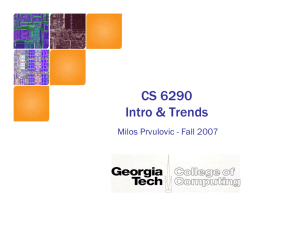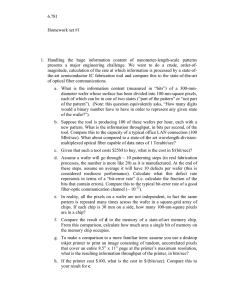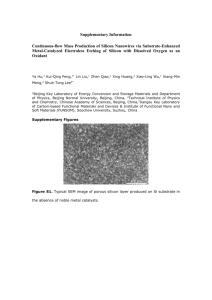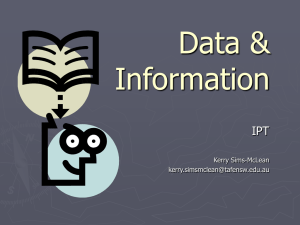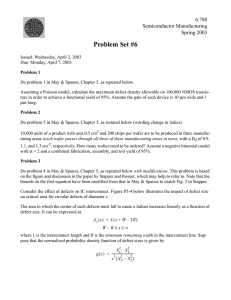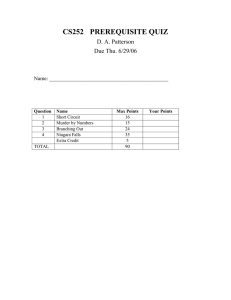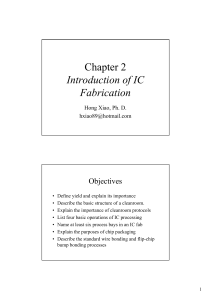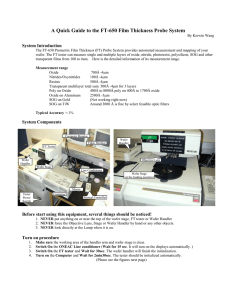Cost - Department of Computer Science and Electrical Engineering
advertisement
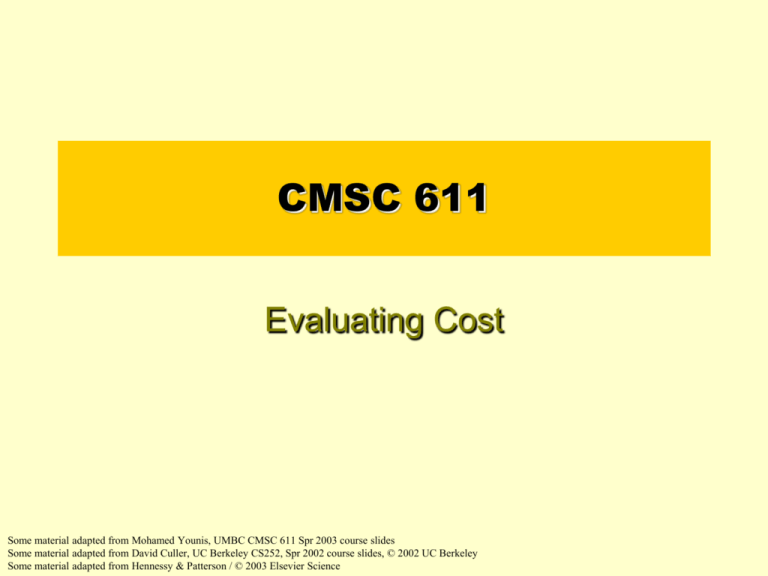
CMSC 611 Evaluating Cost Some material adapted from Mohamed Younis, UMBC CMSC 611 Spr 2003 course slides Some material adapted from David Culler, UC Berkeley CS252, Spr 2002 course slides, © 2002 UC Berkeley Some material adapted from Hennessy & Patterson / © 2003 Elsevier Science Integrated Circuits: Fueling Innovation • Chips begins with silicon, found in sand • Silicon does not conduct electricity well and thus called semiconductor • A special chemical process can transform tiny areas of silicon to either: – Excellent conductors of electricity (like copper) – Excellent insulator from electricity (like glass) – Areas that can conduct or insulate (a switch) • A transistor is simply an on/off switch controlled by electricity • Integrated circuits combines dozens of hundreds of transistors in a chip Integrated Circuits: Fueling Innovation • Technology innovations over time Year 1951 1965 1975 1995 Technology used in computers Relative performance/unit cost Vacuum tube 1 Transistor 35 Integrated circuits 900 Very large-scale integrated circuit 2,400,000 Advances of the IC technology affect H/W and S/W design philosophy Microelectronics Process 20-30 processing steps Slices Die Test Package Package Test • Dice Ship Silicon ingots: – 6-12 inches in diameter and about 12-24 inches long • Impurities in the wafer can lead to defective devices and reduces the yield Integrated Circuits Costs Dies_per_Wafer = p ´ (Wafer_diameter/2)2 Die_Area - p ´ Wafer_Diameter 2 ´ Die_Area -a é Defects_per_Unit_Area * Die_Areaù Die_Yield = Wafer_Yield ´ ê1 + úû ë a Die_Cost = Wafer_Cost Dies_per_Wafer ´ Die_Yield Die cost roughly goes with die area4 Die_Cost + Testing_Cost + Packing_Cost IC_Cost = Final_Test_Yield What Affects Cost? 1. Learning curve: – – – The more experience in manufacturing a component, the better the yield In general, a chip, board or system with twice the yield will have half the cost. The learning curve is different for different components, complicating design decisions 2. Volume – – Larger volume increases rate of learning curve Doubling the volume typically reduce cost by 10% 3. Commodities – – Are essentially identical products sold by multiple vendors in large volumes Foil the competition and drive the efficiency higher and thus the cost down Real World Examples Chip Layers Wafer cost Defect/cm2 Area (mm2) Dies/Wafer Yield Die Cost 386DX 2 $900 1.0 43 360 71% $4 486DX2 3 $1200 1.0 81 181 54% $12 PowerPC 601 4 $1700 1.3 121 115 28% $53 HP PA 7100 3 $1300 1.0 196 66 27% $73 DEC Alpha 3 $1500 1.2 234 53 19% $149 SuperSPARC 3 $1700 1.6 256 48 13% $272 Pentium 3 $1500 1.5 296 40 9% $417 From "Estimating IC Manufacturing Costs,” by Linley Gwennap, Microprocessor Report, August 2, 1993, p. 15 Cost vs. Price List Price Average Discount 25% to 40% Gross Margin 34% to 39% Direct Cost 6% to 8% Avg. Selling Price Component Cost 15% to 33% • Component Costs: raw material cost for the system’s building blocks • Direct Costs (add 25% to 40%) recurring costs: labor, purchasing, scrap, warranty • Gross Margin (add 82% to 186%) nonrecurring costs: R&D, marketing, sales, equipment maintenance, rental, financing cost, pretax profits, taxes • Average Discount to get List Price (add 33% to 66%): volume discounts and/or retailer markup Example: Price vs. Cost Chip Prices (August 1993) for a volume of 10,000 units Chip 386DX 486DX2 PowerPC 601 DEC Alpha Pentium Area (mm2) 43 81 121 234 296 Total Cost $9 $35 $77 $202 $473 Price $31 $245 $280 $1231 $965 Comment No Competition Recoup R&D? Defining Performance • Performance means different things to different people, therefore its assessment is subtle Analogy from the airlines industry: • How to measure performance for an airplane? – Cruising speed – Flight range – Passenger capacity (How fast it gets to the destination) (How far it can reach) (How many passengers it can carry) Criteria of performance evaluation differs among users and designers Performance Metrics • Response (execution) time: – The time between the start and the completion of a task – Measures user perception of the system speed – Common in reactive and time critical systems, single-user computer, etc. • Throughput: – The total number of tasks done in a given time – Most relevant to batch processing (billing, credit card processing) – Mainly used for input/output systems (disk access, printer, etc.) Response-time Metric • Maximizing performance means minimizing response (execution) time 1 Performance = Execution time Response-time Metric 1 Performance = Execution time • Performance of Processor P1 is better than P2 if – For a given work load L – P1 takes less time to execute L than P2 Performance (P1) > Performance (P2 ) w.r.t L Þ Execution time (P1,L) < Execution time (P2,L) Response-time Metric 1 Performance = Execution time • Relative performance captures the performance ratio – For the same work load CPU Performance (P2 ) Total execution time (P1) = CPU Performance (P1) Total execution time (P2 )



